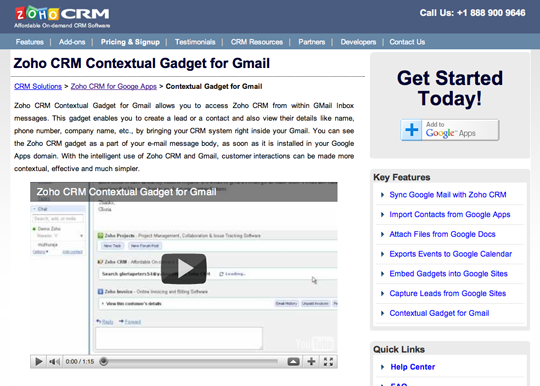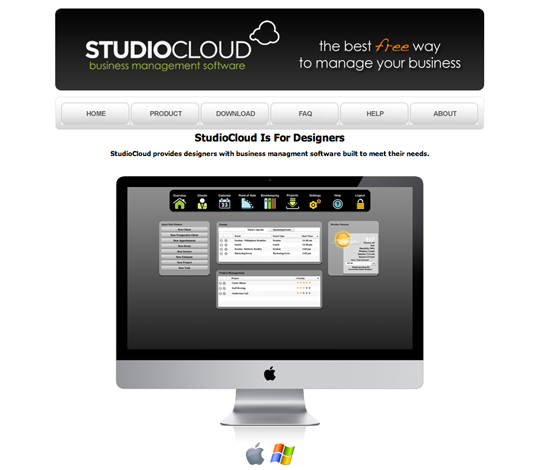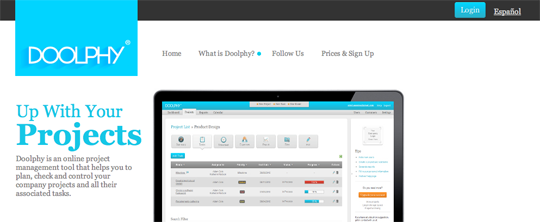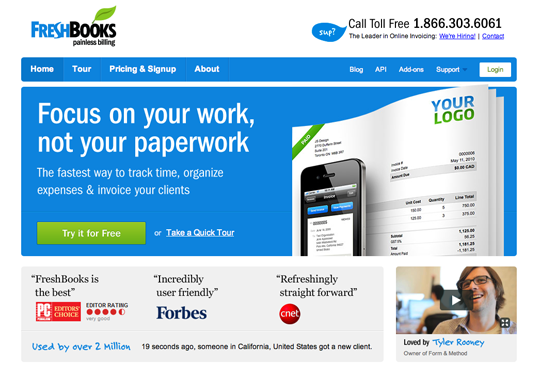Being organized is not something creative types are necessarily known for. However, in managing your freelance design business, it’s a must. In fact, with the exception of one or two, every successful freelancer I know (design or otherwise) has this one thing in common. Organization. Of course there are a lot of different ways to organize your projects, clients, potentials, leads, invoices, etc. And none of them is the definitive, “correct way.” However, I’ve found that having a few select tools can go a long way in making the process a lot easier and even enjoyable. So I’ve rounded up a short, but what I hope is a very helpful, list of tools for managing your freelance design business.
Organization & Client Management
1. – 4. Zoho CRM & Google Apps
Let’s get started with the “suite” of apps I recommend the highest, and happen to use the most – Zoho CRM, Gmail, Google Calendar, and Google Docs. Or, numbers one through four respectively. And just in case you’re not familiar with the term CRM, it stands for Client Relations Management. This type of application is used for keeping track of and even taking notes on new leads/project inquiries, existing and past clients, potential clients, project opportunities, sales you’ve closed, sales you’re working on closing, and of course, tasks to be completed. It does a lot more than that of course, but it really just depends on your business needs as to how you will use and customize this online software.
The main benefit to using CRM software is it’s one place that gives you a birds-eye view of where you’re at with all your clients, the ability to easily track how much money your marketing efforts are bringing in, and it provides features you need to nurture and grow your client base. The usefulness of such a tool only increases when you’re able to combine it with other apps that you use in the daily life of your business.
When a new project inquiry pops into you inbox from someone who’s either responding to an ad you’ve placed, the contact form on your website, or any other way that you attract business – it’s now possible with the marriage of Zoho CRM and Google Apps to check your database of clients, leads, etc. and if they’re not someone you’ve already talked to or worked with, add them to Zoho from within Gmail. You can also attach Google Documents, sync up appointments on your Google Calendar, and even add contact specific tasks…all from the universal navigation bar at the top of your Google Apps. In other words, these tools keep your business organized so that you don’t lose or squander a single lead and yet spend most of your time doing what you do best, designing.
For a more detailed review of Zoho CRM, check out this link to watch a customer video review that walks you through the service. You can also click through the image below for an overview of how Zoho CRM works with Google Apps.
5. StudioCloud
“StudioCloud is free desktop software that provides an integrated system including Client Management, Scheduling, Point-of-Sale, Bookkeeping, Reporting, Marketing Campaigns, Project/Event/Order Management and much more!” Basically, it’s a pretty nifty all-in-one package. For me, the only draw-back to this approach is that it’s desktop. I personally really like having my stuff in the cloud, which in this case happens to be an extra fee. But if you don’t want to deal with the set-up involved in patching together several free apps to do all of this for you, then this is probably a good option. Not to mention that this application goes beyond the sales and CRM features I was praising above and allows you to manage both creative and business elements in one place. Very nice indeed.
6. Doolphy
As opposed to StudioCloud or the combination of Zoho CRM and Google Apps, Doolphy is simply concerned with managing your projects and their associated tasks. Doolphy also puts a premium on collaboration, allowing you to have as many users as you want associated with one account. On the downside, the free account only allows for one project at a time with limited storage. But if all you’re really after is an attractive place to keep tabs on your project tasks then this is the tool for you 
Payment Tools
No set of business management tools would be complete without at least a few of them being dedicated to making it as easy as possible for you to collect the money you’ve worked so hard for.
7. FreshBooks
Next up we have Freshbooks, the self proclaimed painless way to do billing. I have to hand it to them too, they’ve built a fantastic product. Freshbooks has made it incredibly easy to track your time, create and send custom branded invoices, as well as accept online payments that it’s no wonder they’re the service of choice for millions. The one thing that you need to know about the free version though is that while it has every major feature of the paid versions, it only allows you to manage 3 clients at once. However, if you’re the type of freelancer that does regular work for a few companies, Freshbooks could be the time and hassle saving tool for billing you’ve been looking for.
8. Square
First up we have Square, which makes it unbelievably simple to collect credit card payments both in person and over the phone (or email). This is great for when you deal locally and actually meet face to face with your clients. You can bring along the free reader that attaches to your android handset or iphone and process the payment right there. Or, if you want to take the payment later they can read you the card number over the phone or send it to you via email and you can manually punch it in. Within seconds your client has a digital receipt and you have the money in your account. So simple. So awesome!
9. Paypal
And finally, the ever popular Paypal. Is it new and pretty? No…but almost everyone is familiar with it and like them or hate them, Paypal makes it pretty easy to send out an invoice and receive payment. Sometimes, that’s all you really want or need.
What do you think? Was this list of tools helpful? Do you know of any that you think I should have included? Let me know in the comments below.






Comments
Post a Comment